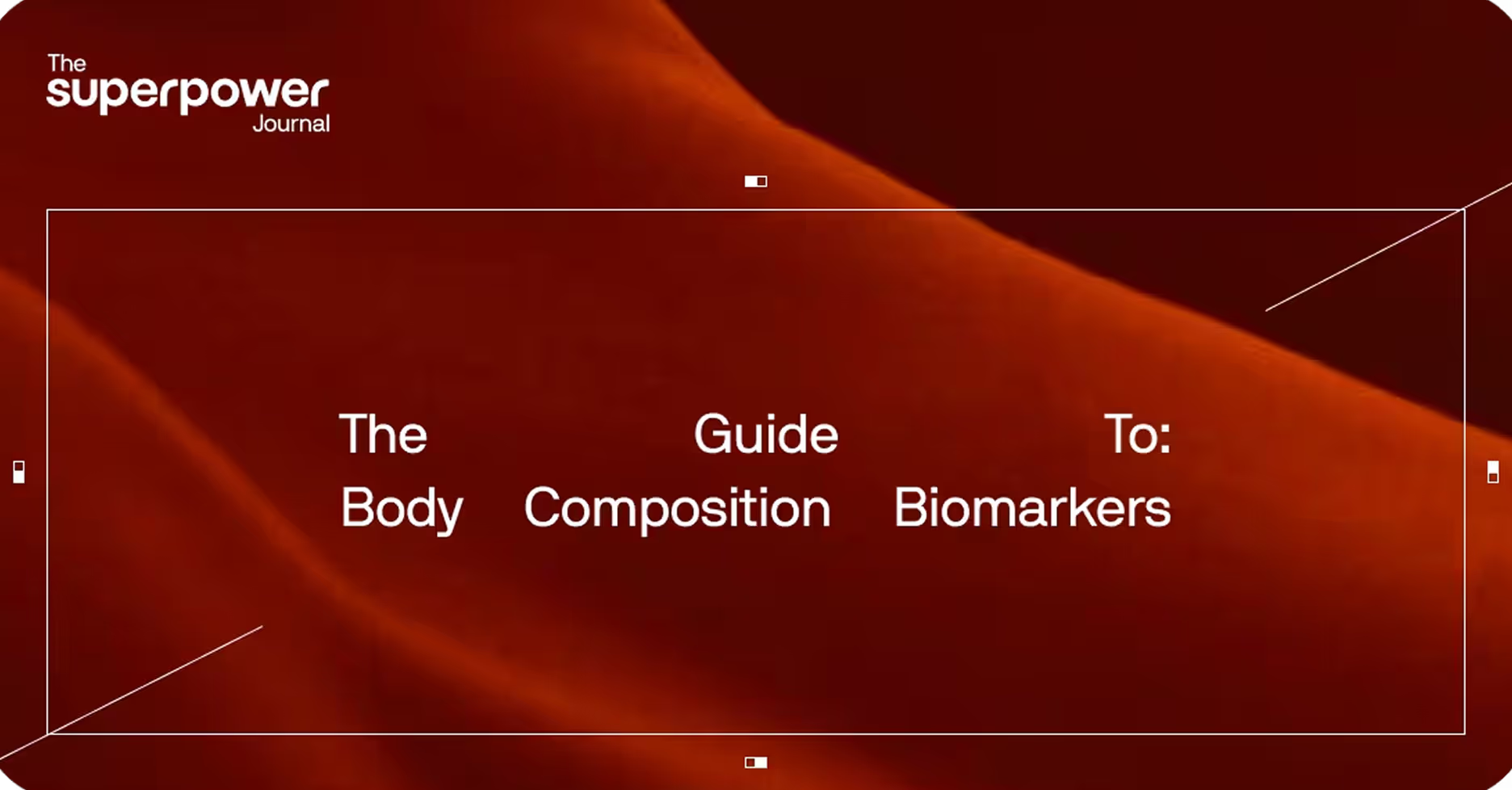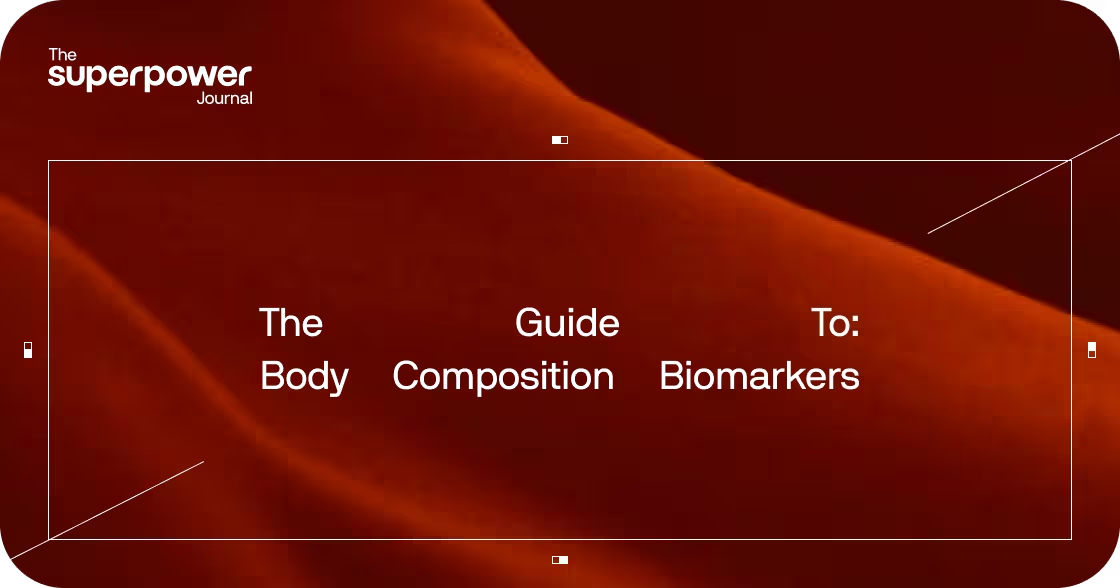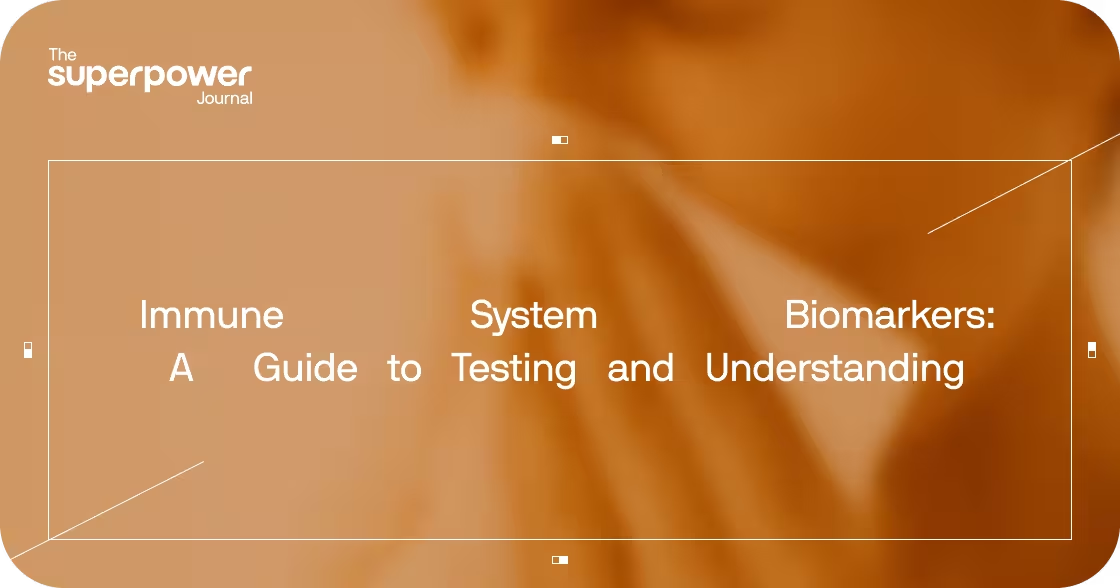Why body composition matters
Body weight alone does not adequately capture an individual’s health status. Two people can weigh the same but differ in risk depending on how much muscle, fat, and bone make up their body composition¹. Excess adiposity, particularly visceral fat, is strongly associated with type 2 diabetes, cardiovascular disease, and certain cancers² ³. On the other hand, low skeletal muscle mass, particularly in older adults, is a key predictor of frailty, disability, falls, fractures, and premature mortality⁴ ⁵.
Globally, obesity rates have risen dramatically, with the majority of adults in the United States now classified as overweight or obese, and sarcopenia estimated to affect approximately 10–27% of older adults, depending on diagnostic criteria⁶. These shifts in body composition—characterized by increases in fat mass and decreases in lean tissue—play a central role in metabolic disorders and accelerated aging trajectories.
Body composition as a systems biomarker
Body composition is more than the sum of its parts. Fat, muscle, and bone act as active metabolic and endocrine tissues that influence systemic physiology:
- Adipose tissue secretes adipokines such as leptin and adiponectin, but excess visceral fat produces pro-inflammatory cytokines like TNF-α and IL-6, promoting chronic systemic inflammation and insulin resistance² ⁷.
- Skeletal muscle produces myokines during contraction, which help regulate glucose metabolism, fat oxidation, and systemic energy homeostasis⁵ ⁸.
- Bone releases osteokines, which interact with insulin sensitivity and energy metabolism, illustrating bone’s role as an endocrine organ⁹.
- Muscle and bone interplay through mechanical loading: low muscle mass often parallels reduced bone mineral density (BMD), a condition termed osteosarcopenia¹⁰.
Because of these interactions, body composition biomarkers provide a systemic marker of health rather than isolated measurements.
Core Body Composition Biomarkers
Lean body mass
Lean body mass includes muscle, bone, organs, and water, but clinically its importance is driven by skeletal muscle. Adequate muscle mass maintains physical performance, mobility, and metabolic stability. Loss of muscle mass, particularly when coupled with reduced strength, defines sarcopenia—a condition linked to hospitalization, falls, fractures, functional decline, and mortality in older individuals⁴ ⁵.
Higher lean mass is also associated with improved glucose disposal and resting energy expenditure, buffering against metabolic disease⁸ ¹¹.
Fat mass percentage
Fat is physiologically necessary for hormone production and insulation, but excess fat mass, particularly when distributed viscerally, increases cardiometabolic risk² ³.
Reference population-based ranges often place healthy fat percentage at roughly 10–25% for men and 20–35% for women, with higher values associated with insulin resistance, fatty liver, hypertension, and dyslipidemia¹². Fat distribution, however, is more predictive of risk than total body fat alone.
Visceral adipose tissue (VAT)
VAT refers to fat deposits around intra-abdominal organs. Unlike subcutaneous fat, VAT is metabolically active and releases excess free fatty acids and inflammatory mediators directly into the portal circulation, impairing liver and systemic metabolism² ³ ⁷.
Meta-analyses consistently show that higher VAT is highly predictive of type 2 diabetes, cardiovascular disease, and all-cause mortality, even among individuals with normal BMI¹³ ¹⁴.
Skeletal muscle index (SMI)
The skeletal muscle index (kg/m²) is a standardized assessment of muscle mass relative to height. Consensus definitions such as the European Working Group on Sarcopenia in Older People (EWGSOP) use thresholds of <7.0 kg/m² in men and <5.5 kg/m² in women as indicators of sarcopenia⁴. Low SMI correlates with adverse outcomes including falls, disability, and reduced survival⁵ ¹⁵.
Waist-to-hip ratio (WHR)
WHR is a low-cost anthropometric proxy for central adiposity. Large meta-analyses have established that WHR predicts cardiovascular events and mortality more strongly than BMI¹⁶. Consensus guidelines note that WHR values above 0.9 in men and 0.85 in women suggest central obesity and increased health risk¹⁶ ¹⁷.
Bone mineral density (BMD)
BMD, typically measured by dual-energy X-ray absorptiometry (DXA), reflects bone strength and is strongly predictive of fracture risk. Osteoporosis is defined as a BMD T-score ≤ -2.5, while osteopenia lies between -1.0 to -2.5⁹ ¹⁸. Sarcopenia and osteoporosis often co-exist as osteosarcopenia, compounding fracture and disability risk¹⁰.
Reference Ranges: Normal vs. Optimal
Laboratory “normal” values are typically based on population averages but do not necessarily represent optimal health. For example, body fat percentages at the higher end of normal are still associated with increased metabolic risks¹² ¹⁹.
Links Between Body Composition and Aging
The balance of muscle and fat influences not only disease risk but also cellular aging mechanisms⁵ ²⁰:
- Inflammaging: VAT promotes chronic systemic inflammation, accelerating vascular aging and cognitive decline² ³ ⁷.
- Mitochondrial health: Skeletal muscle supports mitochondrial density and energy homeostasis, slowing age-related decline⁵ ⁸.
- Oxidative stress: Adipose-driven oxidative stress damages mitochondria and DNA, whereas muscle exerts protective antioxidant effects²⁰.
- Bone-muscle interactions: Declining BMD and muscle mass together accelerate frailty and disability risk¹⁰ ¹⁸.
Optimizing Body Composition Biomarkers
Evidence-based interventions include:
- Resistance training: Proven in meta-analyses to increase muscle mass, strength, and functional outcomes across all ages, especially older adults⁵ ²¹.
- Aerobic exercise: Improves visceral fat reduction and cardiometabolic health, with synergistic effects when combined with resistance training²².
- Protein intake: Consensus recommends 1.0–1.2 g/kg/day for older adults to maintain muscle, with higher intakes (1.2–1.6 g/kg/day) beneficial for sarcopenia prevention²³.
- Adequate vitamin D and calcium: Reduce fracture risk and support bone health when combined with exercise⁹ ¹⁸.
- Sleep and stress regulation: Poor sleep and chronic stress are linked with adverse body composition and increased cardiometabolic risk, though mechanisms remain under investigation²⁴.
Body Composition Testing Methods
- DXA scans: Gold standard for body fat, lean mass, and BMD assessment¹⁸.
- Bioelectrical impedance analysis (BIA): Widely used but less reliable due to hydration dependency¹².
- CT/MRI imaging: Highly accurate for VAT but costly and rarely used clinically except in research¹³.
- Anthropometry: Low-cost measures like WHR and waist circumference remain strong predictors of cardiometabolic disease¹⁶ ¹⁷.
Testing is particularly valuable in older adults at risk for sarcopenia and osteoporosis, individuals with obesity or metabolic syndrome, and patients with chronic illnesses where muscle loss worsens outcomes⁴ ⁵ ¹⁰.
Building a Healthier Future with Biomarker Testing
Tracking body composition biomarkers provides actionable insights into whether a person is trending toward resilience or vulnerability. Unlike weight or BMI alone, these markers reveal the underlying balance of fat, muscle, and bone that drives long-term health outcomes. With regular monitoring and evidence-based lifestyle choices, body composition biomarkers offer a pathway to extending both healthspan and independence.
Ready to test your biomarkers? Join Superpower today to access advanced biomarker testing with over 100 lab tests.
- Wells JC, Fewtrell MS. Measuring body composition. Arch Dis Child. 2006.
- Després JP. Body fat distribution and risk of cardiovascular disease. Circulation. 2012.
- Neeland IJ et al. Visceral and ectopic fat: Pathophysiology and cardiometabolic implications. Eur Heart J. 2019.
- Cruz-Jentoft AJ et al. Sarcopenia: European consensus on definition and diagnosis. Age Ageing. 2010.
- Beaudart C et al. Sarcopenia in daily practice: interim clinical recommendations from the EUGMS. Eur Geriatr Med. 2016.
- Shafiee G et al. Prevalence of sarcopenia in the world: a systematic review and meta-analysis. Osteoporos Int. 2017.
- Wajchenberg BL. Subcutaneous and visceral adipose tissue: their relation to metabolic syndrome. Endocr Rev. 2000.
- Pedersen BK, Febbraio MA. Muscles, exercise and obesity: skeletal muscle as a secretory organ. Nat Rev Endocrinol. 2012.
- Karsenty G, Ferron M. The contribution of bone to whole-organism physiology. Nature. 2012.
- Binkley N, Buehring B. Beyond FRAX: It's time to consider "sarco-osteopenia". J Clin Densitom. 2009.
- Wolfe RR. The underappreciated role of muscle in health and disease. Am J Clin Nutr. 2006.
- Kyle UG et al. Body composition reference values. Clin Nutr. 2001.
- Britton KA et al. Body fat distribution, incident cardiovascular disease, cancer, and all-cause mortality. J Am Coll Cardiol. 2013.
- De Koning L et al. Waist circumference and waist-to-hip ratio as predictors of cardiovascular events. Lancet. 2007.
- Chen LK et al. Asian Working Group for Sarcopenia: 2019 consensus. J Am Med Dir Assoc. 2020.
- Wormser D et al. Separate and combined associations of BMI and WHR with vascular disease. Lancet. 2011.
- WHO. Waist-to-hip ratio and health risk. World Health Organization report. 2008.
- Kanis JA et al. European guidance for the diagnosis and management of osteoporosis. Osteoporos Int. 2019.
- Romero-Corral A et al. Normal weight obesity and cardiometabolic risk. Eur Heart J. 2010.
- Franceschi C, Campisi J. Chronic inflammation and aging: inflammatory aging. Nat Rev Immunol. 2014.
- Peterson MD et al. Resistance exercise and health: meta-analysis of randomized controlled trials. Am J Prev Med. 2011.
- Schwingshackl L et al. Impact of aerobic vs resistance training on visceral fat: meta-analysis. Int J Obes. 2014.
- Bauer J et al. Evidence-based recommendations for optimal protein intake in older people. J Am Med Dir Assoc. 2013.
- Grandner MA. Sleep and obesity prevention and treatment. Obes Rev. 2017.




.avif)
.png)






.svg)


